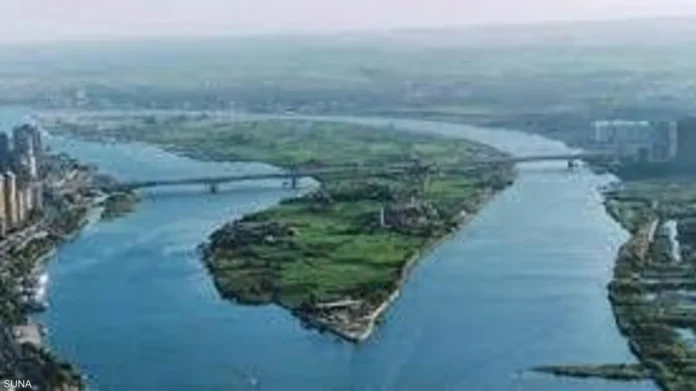The Flood Crisis in Sudan: An Indicator of the Absence of Technical Coordination and the Growing Regional Risks of the GERD:
By: Zaelnoon Suliman, African Affairs Unit – Progress Center for Policies
Policy Brief Summary:
Introduction:
Sudan issued a flood warning earlier this week, pointing to rising water levels along the two main tributaries of the Nile River: the Blue Nile and the White Nile.
Facts:
Sudan’s Ministry of Irrigation and Water Resources confirmed that Nile water levels will continue to rise throughout this week, noting that a number of stations, states, and rivers have reached flood levels. These include: Wad al-Ais (Sennar), Khartoum, Madani, Shendi, Atbara, Berber, and Jebel Aulia stations; in addition to the states of Blue Nile, Sennar, Gezira, Khartoum, River Nile, and White Nile; as well as the Blue Nile (Damazin–Khartoum), White Nile (al-Jabalain–Khartoum), and the Nile (Khartoum–Dongola). Floodwaters also reached some peripheral neighborhoods along the riverbanks in White Nile and Khartoum states.
Experts noted that since the inauguration of the Grand Ethiopian Renaissance Dam (GERD) on September 9, water release from the dam rose to more than 450 million m³ per day, peaking at 750 million m³ over the past five days, before slightly decreasing to 699 million m³—still more than twice the natural inflow at this time (around 300 million m³).
Ethiopia claimed that the floods in Sudan were caused by the White Nile, adding that the dam actually mitigated their catastrophic effects by storing part of the inflows, denying full responsibility for the damages.
Ethiopian Minister of Water Habtamu Itefa Geleta on Monday refrained from directly answering a journalist’s question about the turbines’ shutdown. He acknowledged that the spillway gates had been opened, saying: “We did not release excess water.”
Analysis:
Ethiopia has begun releasing water from the GERD as part of surplus management, turbine operation, and other control mechanisms, according to media sources. Analysts suggest that opening spillways or releasing surplus water is a natural option when the reservoir is full or when pressure on the dam’s upstream basin must be reduced—especially with ongoing reservoir filling and renewed heavy rains in Ethiopia.
Experts argue that Ethiopia made a mistake by filling the reservoir to capacity before completing the installation of all 13 turbines, and before the end of the rainy season in October, due to the push for an official inauguration. This forced later water releases while exceptional rains continued on the Ethiopian plateau, which supplies about 60% of the Nile’s waters and is a major cause of flooding in Sudan. Still, the sudden discharges and lack of coordination with Sudan reveal weaknesses in technical operation and management.
The GERD, with its massive size and stated goals, was expected to regulate Nile flows by limiting floods during heavy rains and increasing releases during droughts. However, this objective can only be achieved through clear, transparent filling and operating rules agreed upon with the downstream countries (Egypt and Sudan)—an agreement that has not yet been reached due to the absence of a comprehensive deal among the three countries on dam management.
Conclusion and Outlook:
The onset of flooding in Sudan highlights the problem of absent technical coordination between Ethiopia and the downstream countries, raising concerns over the GERD’s implications for regional security and stability.
Sudan’s current floods cannot be considered a complete failure of the GERD, but they are a clear indication of weak technical coordination and the lack of a binding agreement on dam management.
The floods show that unilateral operation makes it difficult to predict water levels, causes harm to downstream countries, and heightens political tensions with Ethiopia.
Experts expect a reduction in GERD discharges in the coming period, as the reservoir approaches its normal storage level of 638 meters, after which releases will be limited to daily inflows only.
If turbines enter into operation soon, annual inflows will pass through them. However, if they remain non-operational, Ethiopia will have no alternative but to open spillways to discharge water equal to the daily inflow—meaning the crisis will persist.


